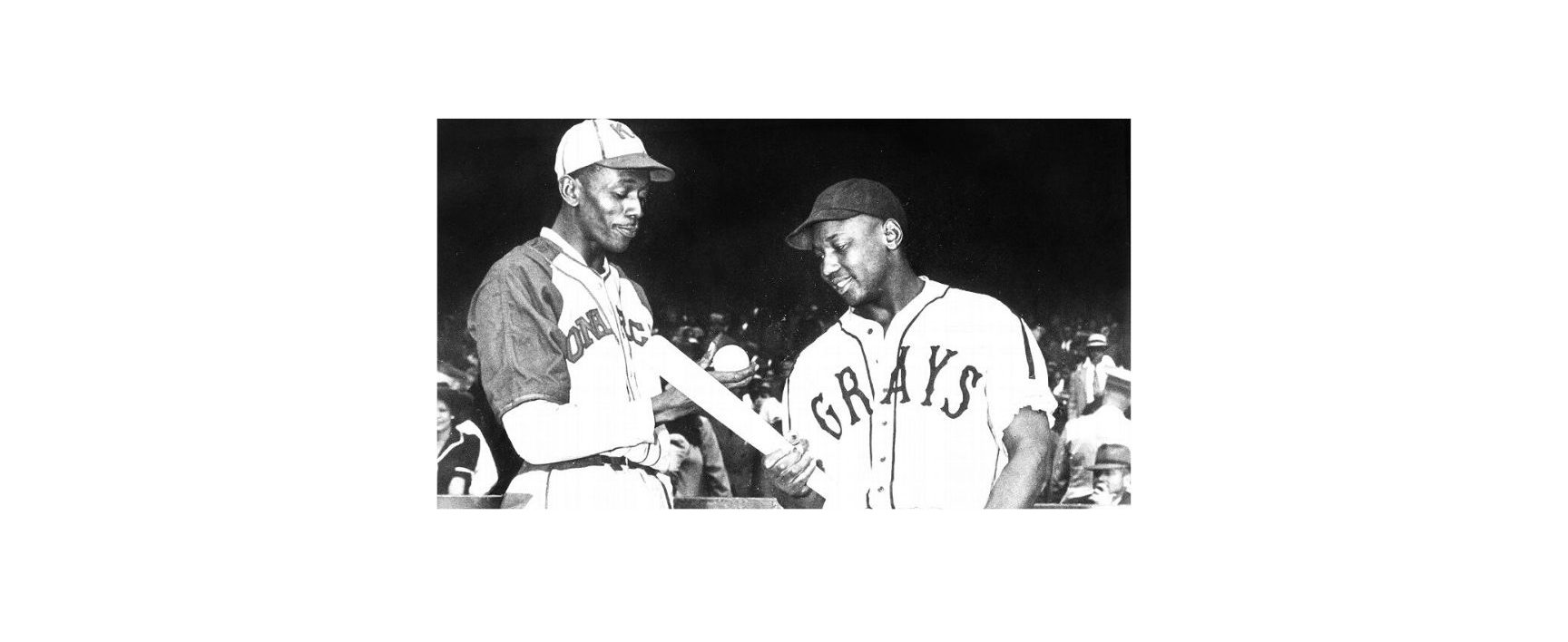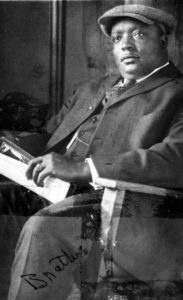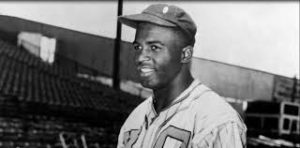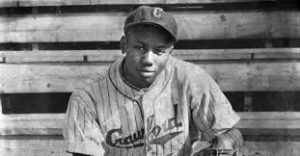
The Rise and Fall of Black Baseball: Remembering the Birth of the Negro National League – 100 Years Ago
By Donald James
Racism in the early-to-mid 20th century – and other periods of time – was painfully ugly in the United States of America. Such hatred, along with laws of bigotry – written and unwritten – robbed African Americans of the same opportunities afforded to whites freely and unconditionally. And playing professional baseball in America – the national pastime since the 1850s – was no exception.
In the early-to-mid 1900s, white Major League Baseball players such as Ty Cobb, Babe Ruth, Mel Ott and Ted Williams were deemed superstars and ultimately elected to the Baseball Hall of Fame. Yet, during their playing heydays, and that of many other white players in the Majors, there were dozens of black baseball players of the era who were just as talented, just as good – or better- but the overwhelming majority never got the recognition or opportunity to showcase their talents at the Major League level, simply because their skins were black.
Some of the Negro players of yesteryear shouldered majestic names and nicknames, like Satchel Paige (pitcher), Cool Papa Bell (centerfielder), Josh Gibson (catcher), Turkey Stearnes (centerfielder), Oscar Charleston (centerfielder), Monte Irvin (left and right fielder), Judy Johnson (third baseman), Buck Leonard (first baseman), and Double-Duty Radcliff (catcher and pitcher), to name a few.
From the aforementioned “short list” of black baseball players of the past, only Paige and Irvin eventually played Major League Baseball. The others, according to baseball historians, would have been sure all-stars in the Majors – if they were white.
Many of the black baseball players found fame in the Negro National League (NNL), which formed in 1920. It wasn’t the first and only league, where Negro players pursued their love of baseball in America, but the NNL was considered the best and most successful. Other Negro Leagues of significance in the era of the NNL were the Eastern Colored League, American Negro League, East-West League, Negro Southern League, and Negro American League.
The Negro National League was the brainchild of Andrew “Rube” Foster, who in February of 1920 convened a group of black team owners and other stakeholders at a YMCA in Kansas City, Missouri. Foster laid out his vision and plans to create the Negro National League. Foster even unveiled a Constitution for the new league to follow.
At the historic meeting, it was decided that the upstart NNL would initially field eight professional baseball teams:
- Detroit Stars
- Chicago American Giants
- Chicago Giants
- Cuban Stars
- Dayton Marcos
- Kansas City Monarchs
- Indianapolis ABCs
- St. Louis Giants
Foster was well-respected in Negro baseball circles, having played as a superstar pitcher for a number of black teams between 1902 and 1917, to include the Chicago Union Giants, Cuban X-Giants, Philadelphia Cuban Giants, Leland Giants (Chicago), and Chicago American Giants. As the end of his playing days approached, Foster managed the Leland Giants and Chicago American Giants, the latter of which he later owned.
In the spring of 1920, the NNL’s kickoff baseball game featured the Chicago American Giants and Indianapolis ABCs. The game was played at Washington Park Stadium in Indianapolis. The ABCs were victorious. Foster, who served as NNL’s first president and treasurer, wanted all NNL teams to play an exciting, proud, entertaining, and electrifying brand of baseball. And they did!
The NNL teams barnstormed consistently, traveling by buses, car caravans, and even trains to their destinations to play the game they loved. The teams played many league games, but also had exhibition contests with other Negro League teams not affiliated with the NNL. In 1924, the first Negro League World Series, played over the course of three weeks, saw the Kansas City Monarchs defeat the Hilldale Athletic Club of Darby Pennsylvania to take the coveted championship title.
In 1926, Foster stepped away from the game, reportedly because of mental issues. His business acumen was greatly missed, but before leaving the game he urged NNL players, managers and team owners to continue. His departing message: “It is your league…Nurse it! Help it! Keep it!”
While the NNL continued, it systematically slowed due to declining attendance and financial woes. Some teams found it difficult to make payroll, along with meeting other expenses associated with the business of running a baseball team: transportation, lodging, purchasing equipment, and more.
Some teams were stronger than others. Of the NNL’s original eight teams, the Detroit Stars represented a ball club with stability – on and off the field. After all, Detroit in the 1920s was a destination city, with a rapidly growing black population fueled by Negros migrating, primarily from the South, to work at Ford, Chrysler, General Motors and other automobile assembly plants.
The Detroit Stars formed in 1919 and was the city’s first black professional sports franchise. The team’s home field was Mack Park, built in 1914 to hold between 5,500 and 6,000 fans comfortably. With creative arrangements, however, the stadium could pack in a few thousands more.
Mack Park served as the Stars’ home field until a July, 1929 fire destroyed a large section of the stadium. The team ultimately played at Hamtramck Stadium, a newly built venue in Hamtramck, Michigan, a small city totally surrounded by Detroit. Of the eight stadiums where the original eight NNL teams played, only Hamtramck Stadium is still standing. While currently undergoing renovations, the 90-year-old stadium is listed on the National Register of Historic Places.
Foster, who was instrumental in much of the Detroit Stars’ success, died in 1930. One year later, the National Negro League met its demise, due to the Great Depression (1929 to 1931), which wreaked financial havoc in America and beyond.
Seeking to fill the void left by the now defunct NNL, in January of 1932, a group of Negro League baseball stakeholders, led by Cumberland Posey, a former Negro baseball player, manager and owner of the Homestead Grays started the East-West League. It consisted of Negro League teams representing eight northern cities. The league didn’t last through its first season.
In 1933, a second NNL was created under the leadership of Gus Greenlee, who reportedly had lots of money-making interests outside of baseball. A year earlier, Greenlee bought the Pittsburgh Crawford and secured the baseball services of the two biggest names in Negro League Baseball: pitcher Satchel Paige and outfielder and homerun sensation Josh Gibson.
Greenlee’s new incarnation of the Negro National League, often referred to as NNL II, consisted of the Pittsburgh Crawfords, Nashville Elite Giants, Indianapolis ABCs, Columbus Blue Birds, Baltimore Black Sox, Brooklyn Royal Giants, and Cole’s American Giants, which evolved from the Chicago American Giants.
Under Greenlee’s new baseball platform, fans voted to have the first-ever East-West All-Star Game. It was played September 10, 1933 at Chicago’s Comiskey Park, home field of the Chicago White Sox. A crowd of 20,000-plus was reported to have witnessed the historic game.
By 1945, white Major League owners were talking amongst themselves about integrating the game. The talks intensified with the formation of the Major League Committee on Baseball Integration, which led Brooklyn Dodgers’ owner Branch Rickey to sign Jackie Robinson, a Negro shortstop with the Kansas City Monarchs of the Negro National League.
 Robinson made his Major League Baseball debut on April 15, 1947, making him the first Negro to play Major League Baseball in the modern era. He was also the first Negro player from the NNL to play in the Majors. As a point of clarification, baseball historians point to Moses Fleetwood Walker as the very first black baseball player in the Majors, when he signed with and played for the all-white Toledo Blue Stockings of the American Association in 1884.
Robinson made his Major League Baseball debut on April 15, 1947, making him the first Negro to play Major League Baseball in the modern era. He was also the first Negro player from the NNL to play in the Majors. As a point of clarification, baseball historians point to Moses Fleetwood Walker as the very first black baseball player in the Majors, when he signed with and played for the all-white Toledo Blue Stockings of the American Association in 1884.
Nevertheless, Robinson was followed to the Big Leagues by outfielder Larry Doby (Newark Eagles), who debuted with the Cleveland Indians in the American League on July 5, 1947. In addition, infielder/outfielder Hank Thompson (Dallas Green Monarchs and Kansas City Monarchs) was the third Negro to enter the Majors, when the St. Louis Browns debuted him July 17, 1947.
With Robinson being the first to break through the modern Major League color barrier, many players in Negro League Baseball believed Josh Gibson was better, and the best power hitter and catcher ever, which included anyone white in the Majors. Gibson, however, never got an opportunity to prove it in the Majors, after spending 16 years in the Negro Leagues. He missed out in the Majors because…he was darker than blue. Gibson died three months before Robinson entered the Majors in 1947.
“One of the things that was disappointing and disheartening to a lot of the black players at the time was that Jackie was not the best player,” Doby said in a 1948 interview. “The best was Josh Gibson. I think that’s one of the reason why Josh died so early; he was heartbroken.”
Yet, the great Satchel Paige, who knew a thing or two about baseball and great Negro League players touted another black power hitting outfielder as the best. The player was Norman “Turkey” Stearne, who played 14 seasons for NNL’s Detroit Stars.
“He could hit the ball over the right field fence, the left field fence and the center field fence,” Paige said in an interview in the late 1940s. “If you didn’t pitch him in just the right spot, he would just hit the ball out the park just about every time. He was as good as Josh Gibson. He was as good as anybody that ever played baseball.”
Needless to said, Gibson nor Stearnes ever sniffed the air of the Majors. It was a travesty…it was racism!
NNL II was on life support, but staved off total shutdown when it merged with the Negro American League (NAL), established in 1937. The handwriting was on the wall and the floodgates were open, as more and more African American players were allowed to finally showcase their baseball talents in the Majors. Fans that once packed NNL stadiums started following Negros who were now playing in the Majors. Many NNL teams couldn’t survive financially as Robinson and other African American players headed to the Majors.
The Negro National League II ceased operations in 1948. The Negro American League continued for two more years, but in a reduced capacity. It’s been well documented that only the Negro League’s Indianapolis Clowns managed to play on through the 1960s, after becoming the Harlem Globetrotters of the baseball diamond.
Yet, in 1952, the Indianapolis Clowns signed 18-year-old Henry Aaron, a native of Mobil, Alabama. Aaron played three months for the Clowns, before signing a contract with the Eau Claire Bears, the minor league team of the Boston Braves. The Braves moved to Milwaukee in 1953, where Aaron began his major league career in 1954 as a member of the Milwaukee Braves. The team became the Atlanta Braves in 1966, after moving to Georgia’s largest city.
Overall, the former Negro League star played 23 seasons for the Braves, earning the interchangeable nicknames “Hammering Hank” and “Hammer.” When Aaron retired following the 1976 season, he was the all-time homerun king with (755), taking the prestigious record away from Babe Ruth.
Many who know baseball through and through have called Aaron “the best all-around player in Major League Baseball history.” Aaron was inducted into the Baseball Hall of Fame on August 1, 1982. He’s currently the senior vice president of the Atlanta Braves.
If the induction into the Hall of Fame is the Big League’s greatest honor to bestow on former players, then an effort for Major League Baseball to atone its past history of prejudice, bigotry and racism against Negro League players was finally unveiled.
In February of 1971, then-Baseball Commissioner Bowie Kuhn announced that selected Negro League players would be included into the Baseball Hall of Fame – but in a separate wing. In other words, the Negro players inducted would be segregated – again.
“I was just as good as the white boys,” legendary Negro League Pitcher Satchel Paige told a sportswriter in 1971. “I ain’t going in the back door of the Hall of Fame.”
Kuhn subsequently corrected the mistake of his “separate but equal” ideal, which led to Paige, in 1971, becoming the first player from Negro League Baseball to be inducted into the Baseball Hall of Fame. According to the Hall’s official count, 35 Negro Leaguers have been elected since 1971.
In alphabetical order, a “partial list” includes Hank Aaron (1982), Ernie Banks (1977), Cool Papa Bell (1974), Oscar Charleston (1976), Ray Dandridge (1987), Leon Day (1995), Martin Dihigo (1977), Larry Doby (1998), Bill Foster (1996), Rube Foster (1981), Josh Gibson (1972), Monte Irvin (1973), Judy Johnson (1975), Buck Leonard (1972), Pop Lloyd (1977), Willie Mays (1979), Jackie Robinson (1962, Bullet Rogan (1998), and Turkey Stearnes (2000).
While the intent of this milestone and legacy story is to chronicle and celebrate the Negro National League on its 100-year anniversary, it should not be lost that there were many more black players, black teams, and black baseball leagues, starting in the 1860s to the early-to-mid 1900s, to establish baseball history in northern, southern, eastern and western sectors of the country. They preserved through hardships on many levels to play their beloved game of baseball under the broad, proud and black banner called Negro League Baseball.
Much more can be learned about the history of black baseball in America by visiting in person or Googling the Negro Leagues Baseball Museum (NLBM), which star Negro Leaguer Buck O’Neil was instrumental in creating. The museum, located in Kansas City, Missouri, was founded in 1990 and is the world’s only venue exclusively created to preserve and celebrate the wonderment of Negro League Baseball, which includes the history of the storied Negro National League.
Sorry, the comment form is closed at this time.
